How to Get From Canmore to Banff (With or Without a Car)
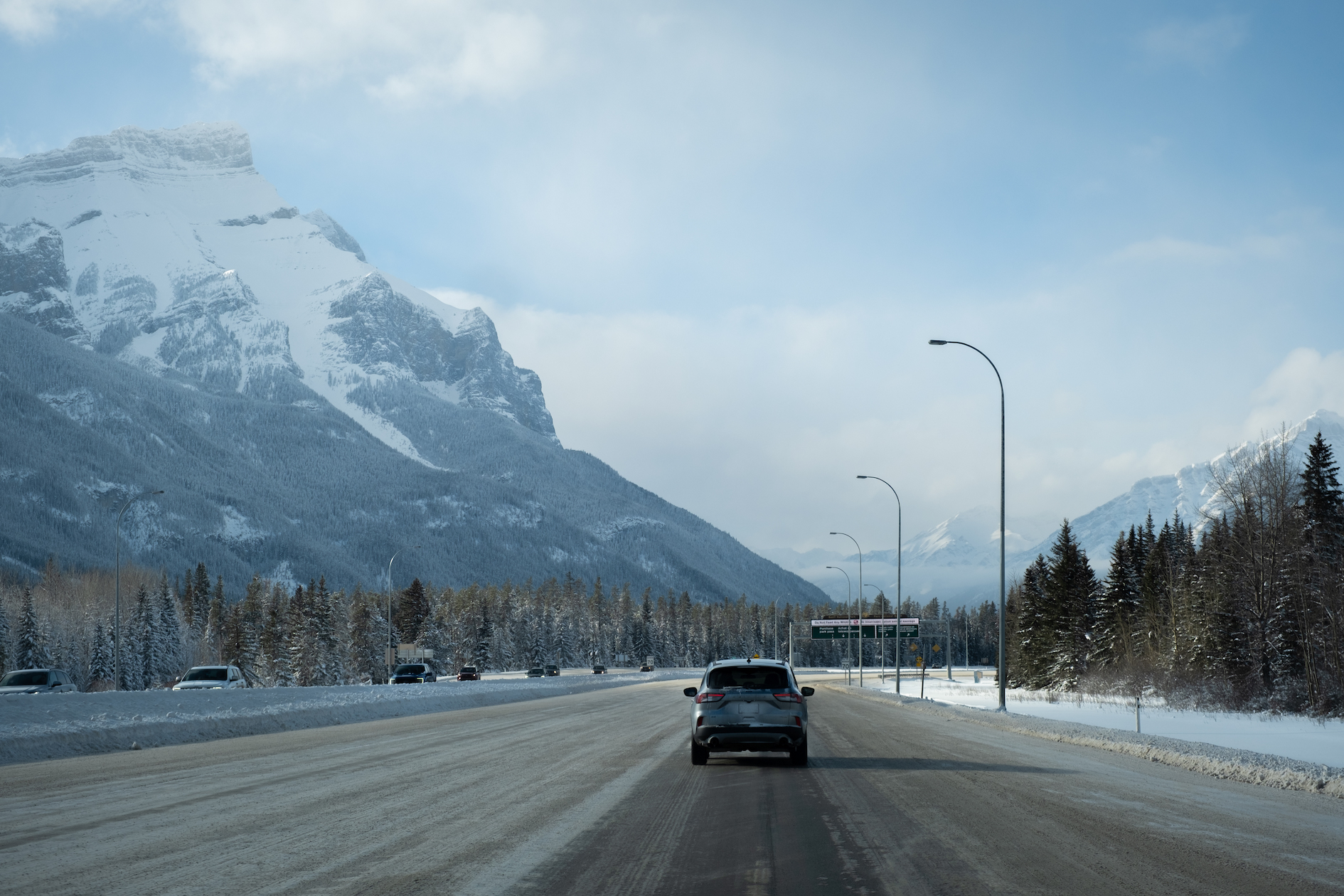
Getting from Canmore to Banff is extremely simple, and you can easily connect the two mountain towns via many modes of transport. Canmore and Banff are two of the most popular places in Alberta, so it makes sense that you want to see both during your trip to the Canadian Rockies.
Whether you’re staying in Canmore or Banff, do not worry; you can rest assured seeing the other town will be seamless. The two towns in the Bow Valley share many amenities and are inextricably linked. Let’s dig in on how to get between the two.
How Long Does it Take to Get From Canmore to Banff?
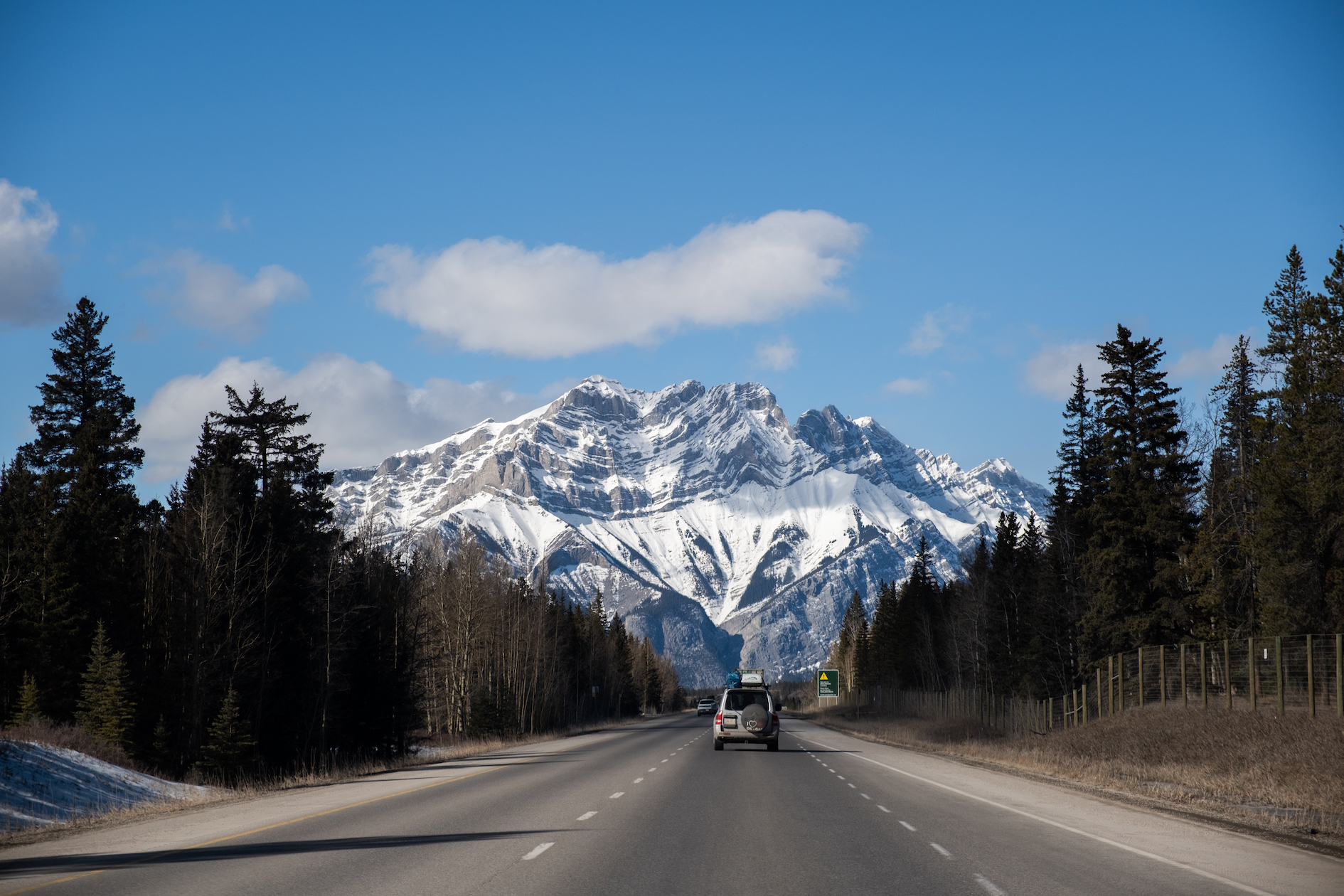
The distance between Downtown Canmore and Downtown Banff is 24.4 km via the Trans-Canada Hwy/AB-1 W. It takes about 20 minutes to drive from Canmore to Banff, depending on traffic conditions.
You’ll pass the Banff Park East Gate between Canmore and Banff. If you already have a Parks Canada pass, stick to the right-hand lanes and keep going. If you have yet to purchase your park pass, stop at one of the booths on the left to buy your pass. You can pay for your pass with cash or a credit card.
Exits for Banff
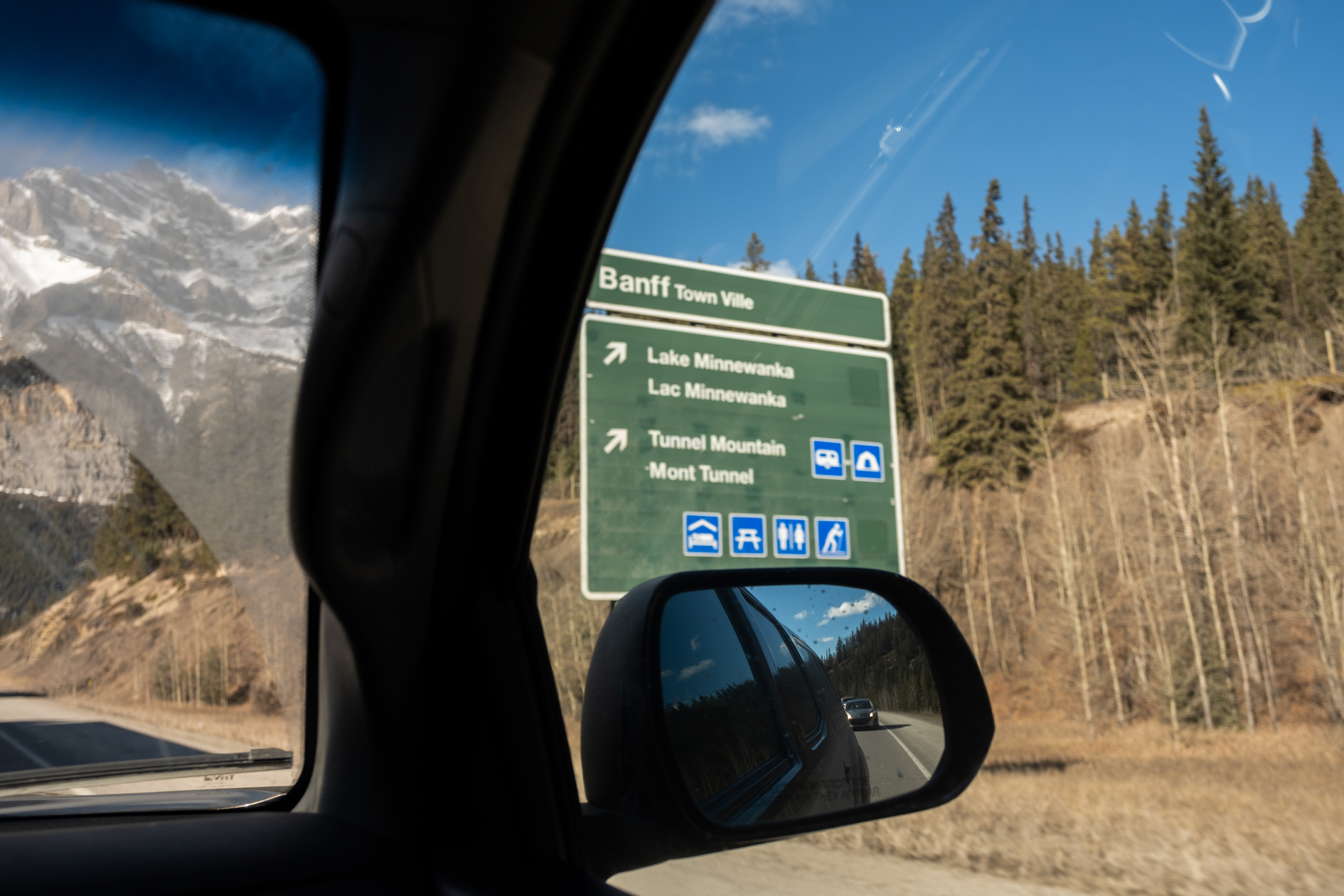
There are two exits for Banff. The first is on your right-hand side when driving from Canmore and is the Banff Avenue exit, and it happens right before you pass Cascade Mountain with Cascade Ponds on your right. This exit will bring you right into Banff Ave if you take a left off of it, and if you take a right, it will bring you to the Lake Minnewanka Scenic Drive (so exit here if you want to see Cascade Ponds, Lake Minnewanka, and Two Jack Lake).
The second exit is the Mt. Norquay Road Exit on your right-hand side. If you get off here, you are closer to Mt. Norquay Scenic Drive (on your right) or turn left towards Banff. This will allow you to stop at Vermilion Lakes or the famous Banff Sign on your way into Banff. This option does not bring you down Banff Avenue but instead skirts the town, and you can easily turn onto Banff Ave.
If you are only coming to Banff and not staying in a hotel in Banff, the second exit may be best for you as it brings you closer to the Banff train station, where there is a lot of free parking available.
How to Get From Canmore to Banff?
You have a few options for traveling between Canmore and Banff (or vice versa)
By Car
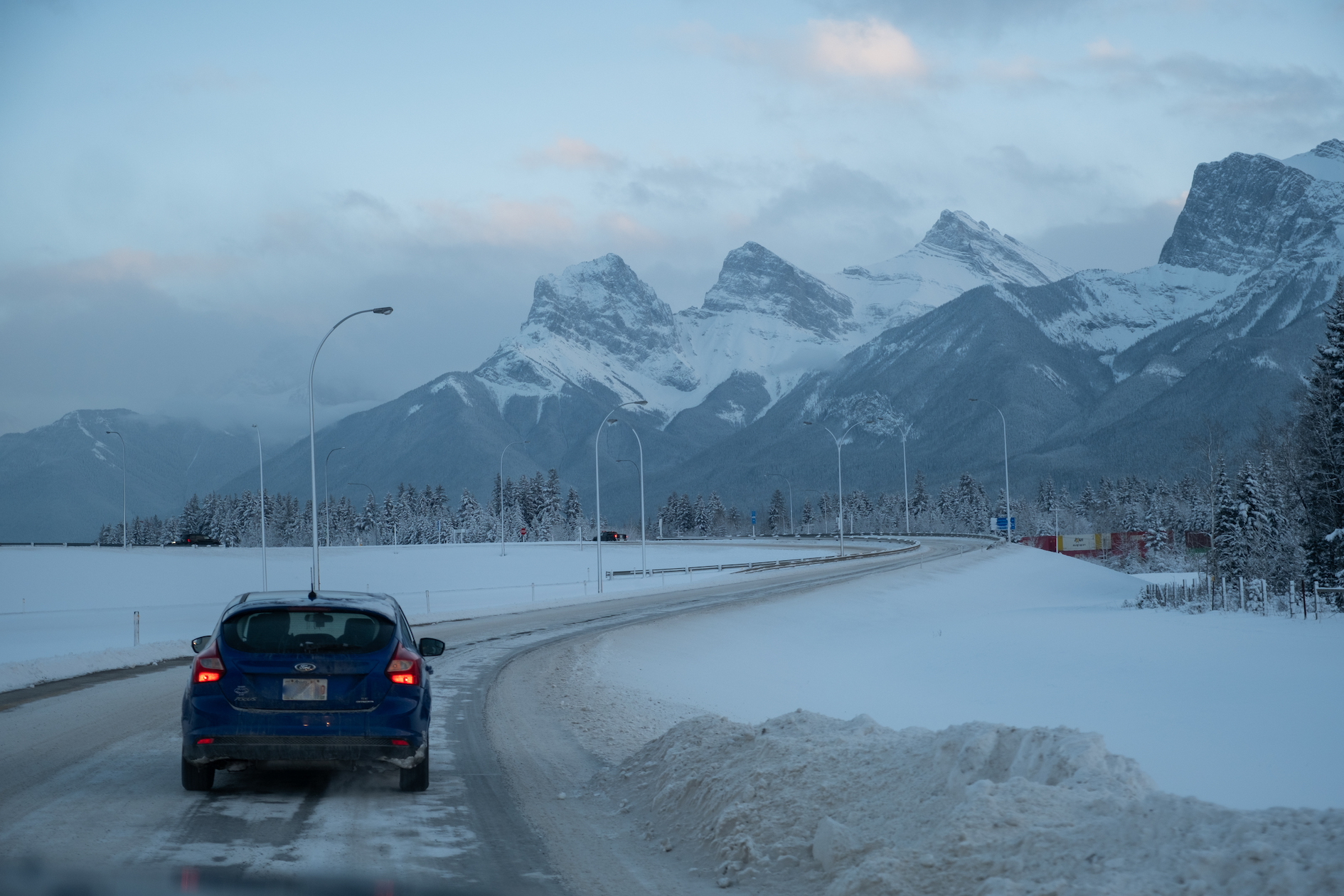
The most popular and easiest way to get from Canmore to Banff is by car. You’ll need your own vehicle, or a rental car, which we recommend getting in Calgary. When driving to Banff, make sure you have your Parks Canada Pass. You will need it to enjoy all the best things to do in Banff!
You can get your Parks Pass online or at the Parks Booths, which you’ll come up upon before entering the park. There is no benefit to buying ahead besides saving a little time if there is a line. Display your Parks Canada Pass around your mirror or on your dashboard, depending on the pass you bought (day pass vs. yearly).
By Bike
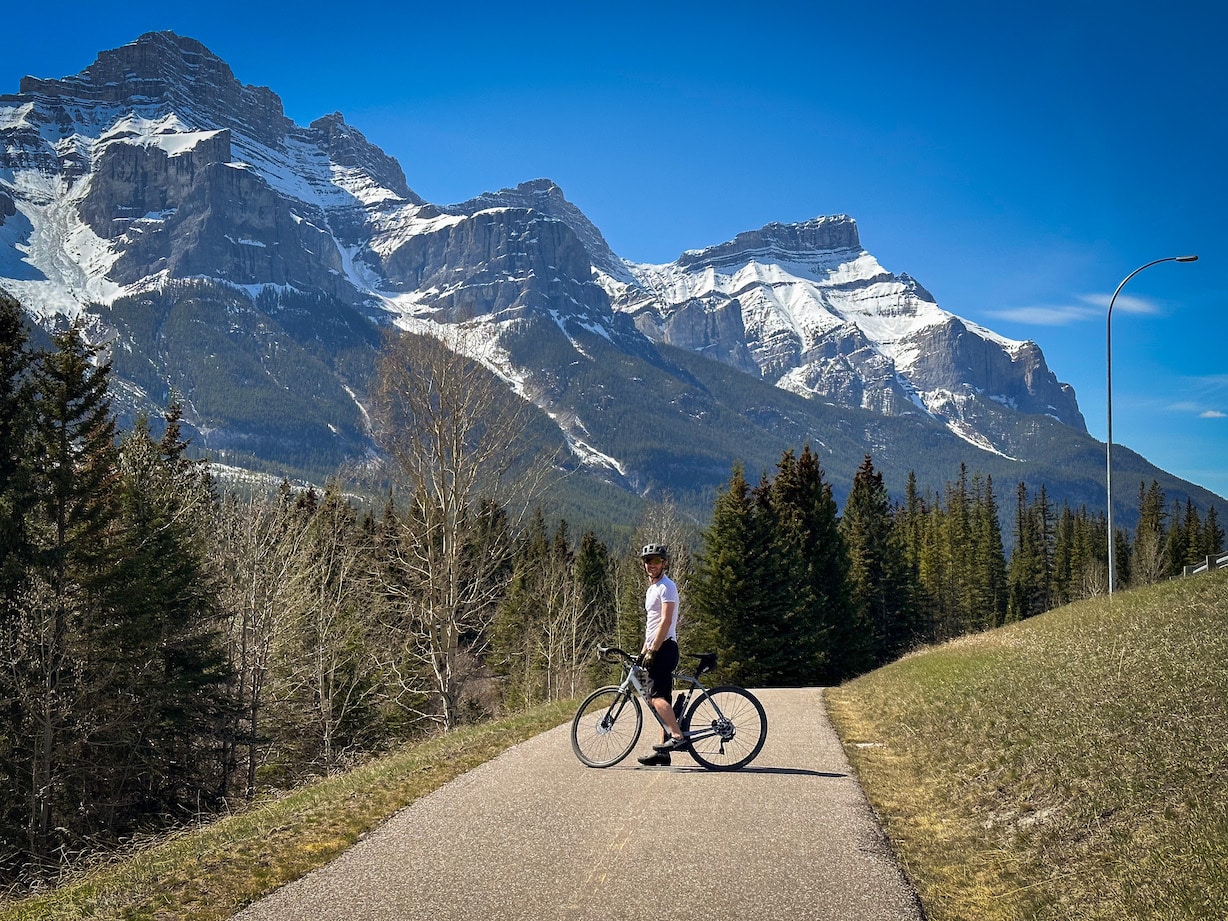
My favorite way to travel from Canmore to Banff is by bike. There are two main ways to get between Banff and Canmore via bike. Though one is much more popular than the other. The first and most popular is the Legacy Trail. The Legacy Trail is a 26.8 km paved pathway from the Bow Valley Parkway to the Travel Alberta Visitor Information Center in Canmore.
Most of the Legacy Trail runs alongside Trans Canada. It is a unique multi-use recreation pathway that bikers love come mid-April when the snow melts. There are rest stops, picnic areas, and epic spots to take in the views.
Depending on pace, the ride from Canmore to Banff on the Legacy Trail can take anywhere between 1 and 3 hours one way. We love to ride the Legacy Trail from Canmore to Banff on a nice summer day and sometimes connect it with the Lake Minnewanka Loop, finishing with a beer at a Banff Brewery to make for an epic day and workout.
The other biking option is the Goat Creek Trail, best reserved for mountain bikes. The Goat Creek Trail starts at the Goat Creek Parking Lot near the Ha Ling and EEOR Trailhead and ends at the Spray River West Trailhead, approximately 150 meters from the Banff Springs Hotel. The trail is best completed starting from Canmore, so you go downhill most of the time. If you begin in Banff, you’ll ride almost all uphill, and biking against the traffic flow.
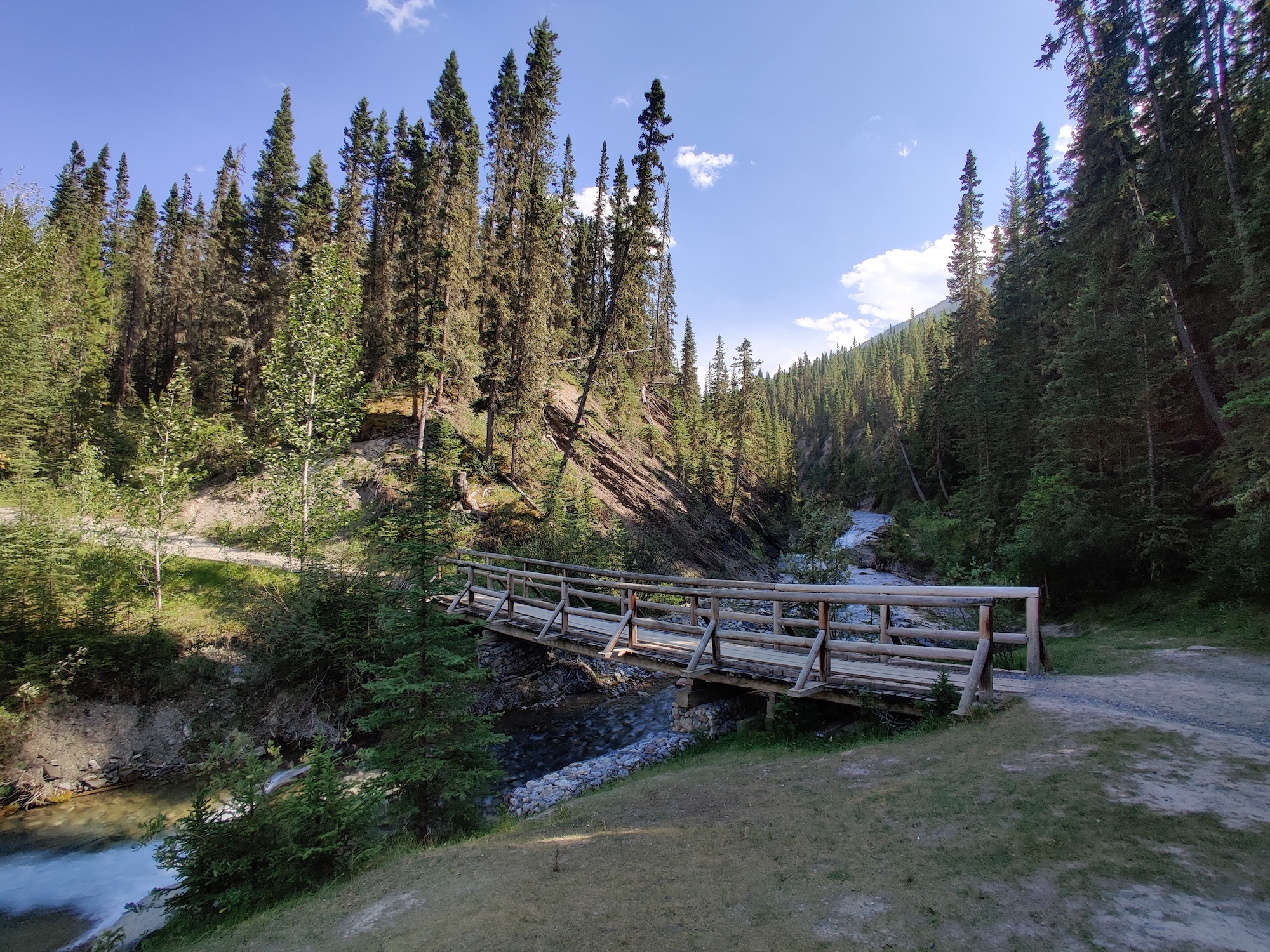
The trail is nearly 18 km in the backcountry but is easy and family-friendly. The path is not paved but is well-graded. Once you get to Banff, enjoy the town before hopping on the Legacy Trail back or taking a bus back to Canmore. You can rent a bike from Rebound Cycle in Canmore if you don’t have a bike to ride the Legacy Trail or Goat Creek Trail.
For intermediate to experienced mountain bikers, there is an option to hop on the Rundle Riverside Trail from the Goat Creek Trail. This is not beginner-friendly and not recommended unless you like pain and suffering on a mountain bike.
By Bus
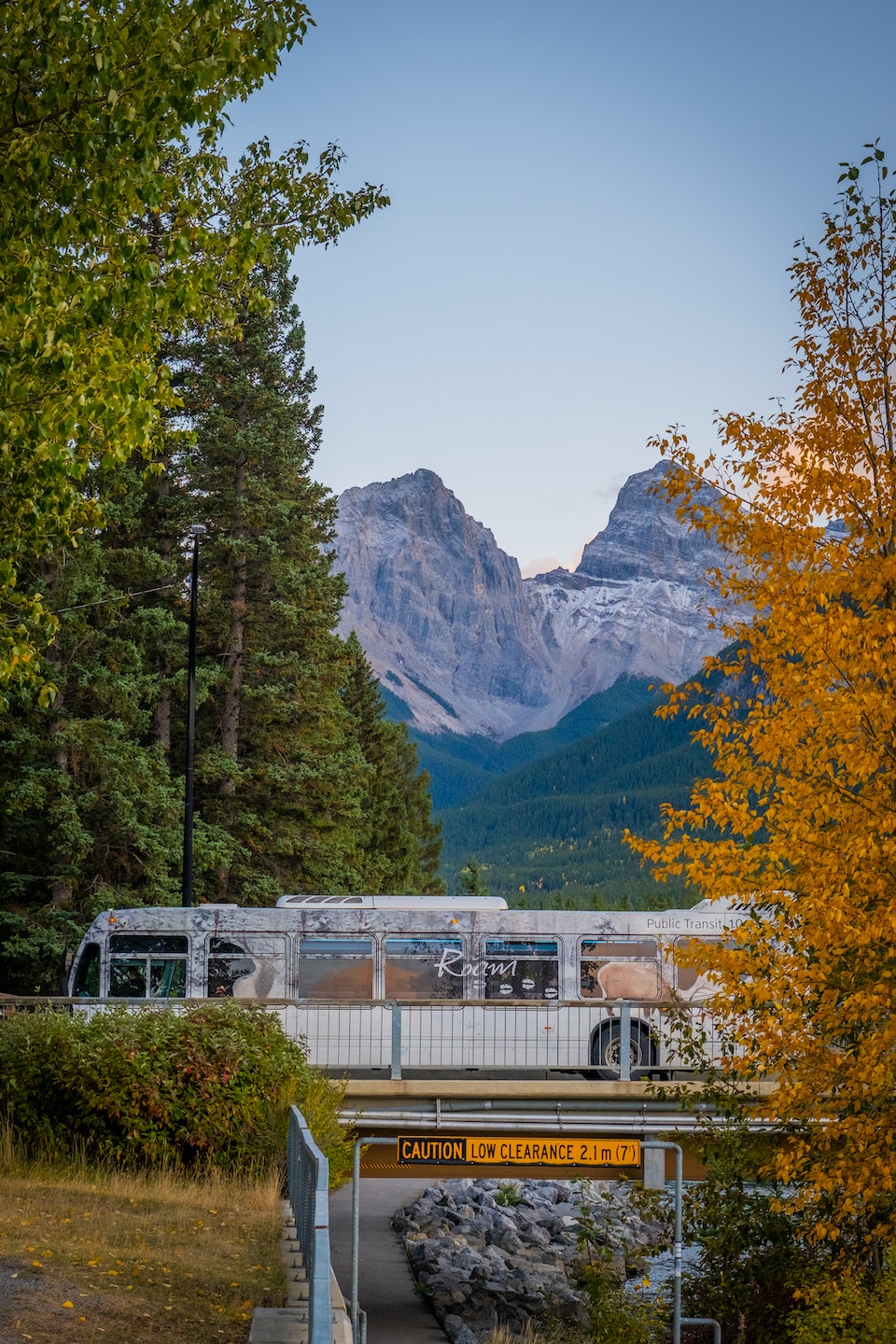
Getting to Banff from Canmore on the Roam Transit bus is possible by taking Route 3. The bus starts early in the morning and runs well into the night, making multiple stops in Banff and Canmore. You can see the schedule here. The bus costs $6 one way, or you can purchase a $15-day pass. You can also buy a $25 Super Pass from Canmore to Banff to Lake Louise, the Super Pass also gets you access to the Lake Connector, which can get you to Moraine Lake.
Roam Super Pass
During the 2025 summer season, the Roam Transit Reservable Super Pass provides all route access for one day. For $30, this One Day Reservable Super Pass allows unlimited travel on all Roam routes, including Canmore, Banff, and Lake Louise. Additionally, it is the sole fare option granting access to the Parks Canada – Lake Connector Shuttle that will connect riders from the Lake Louise Lakeshore to Moraine Lake.
The Reservable Super Pass must be pre-purchased exclusively online at Roam Transit. Show your valid Roam Reservable Super Pass to Parks Canada staff at the Lake Louise Lakeshore or Moraine Lake to receive your Parks Canada boarding pass.
By Taxi
If you don’t have a car or bike or want to take the bus, you can get from Canmore to Banff via taxi. However, this is the most expensive option and we generally don’t recommend it. You can expect a cab ride between the two towns to cost anywhere from $50-$80 (one way). We recommend Three Sisters Taxi.
Rideshare or Hitchhike
Another option to get to Banff is to check PopARide, which offers rideshare services. However, because the distance is so short, it’s not the most popular route for those looking for a rideshare.
The last option is to hitchhike if you feel comfortable. Hitchhiking is semi-popular in the Rockies, and you may see a few people holding up a sign or two, trying to get somewhere. Hitchhiking is always at your own risk, though finding someone traveling between Banff and Canmore is generally straightforward.
Do You Need a Parks Pass to Visit Canmore?
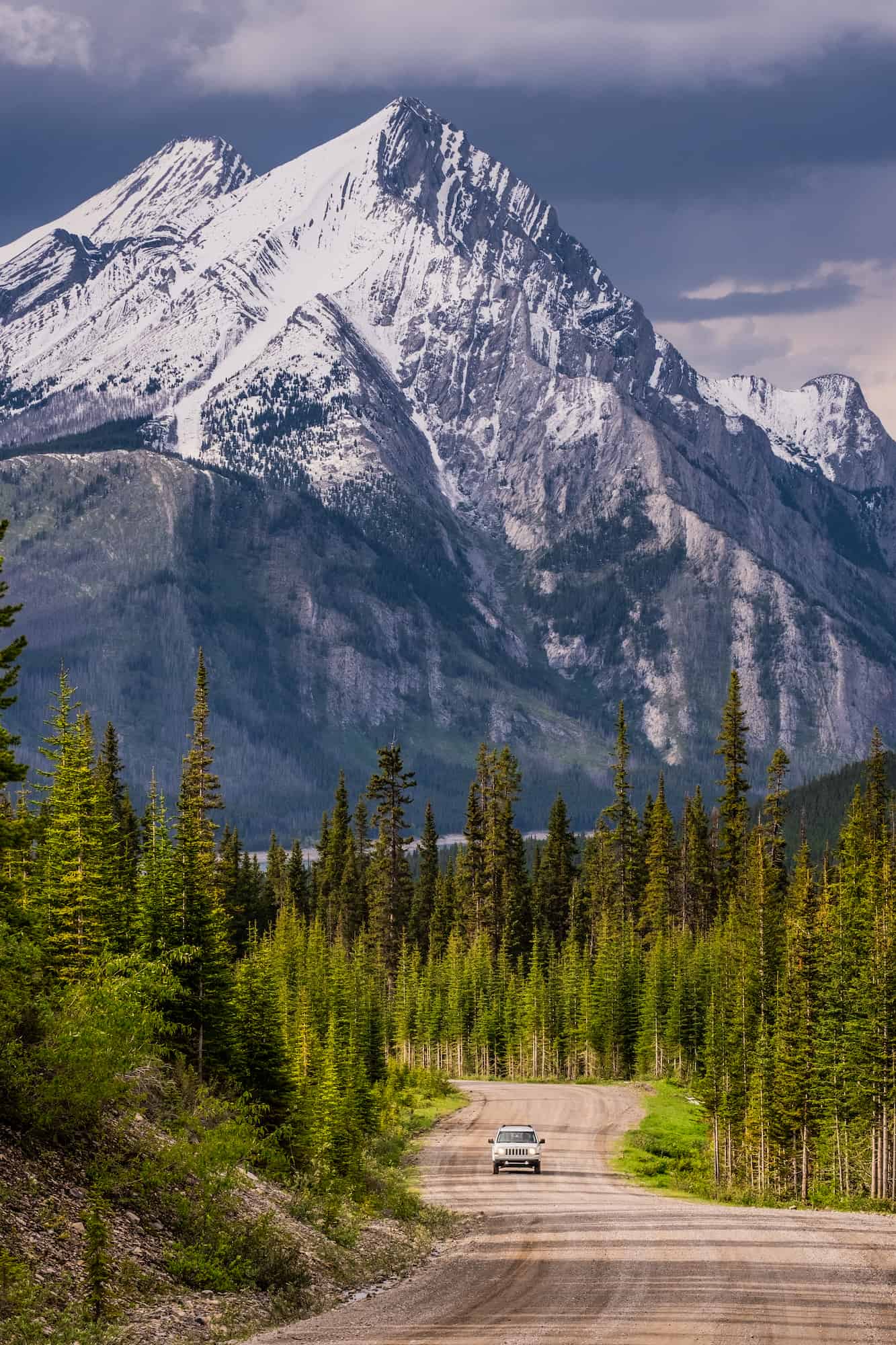
A National Parks Pass is not necessary to visit Canmore. However, many trails, lakes, and areas to recreate around Canmore are within Alberta Parks. The collection of provincial parks is considered Kananaskis Country and requires a valid pass to visit — this includes the popular Canmore Nordic Center. The pass is called the Kananaskis Conservation Pass and it is connected to your vehicle.
Some popular hikes near Canmore that would require a pass include Ha Ling Peak and EEOR. You can find more information about the Kananaskis Conservation Pass on the Alberta Parks website.
Do You Need a Parks Pass to Visit Banff?
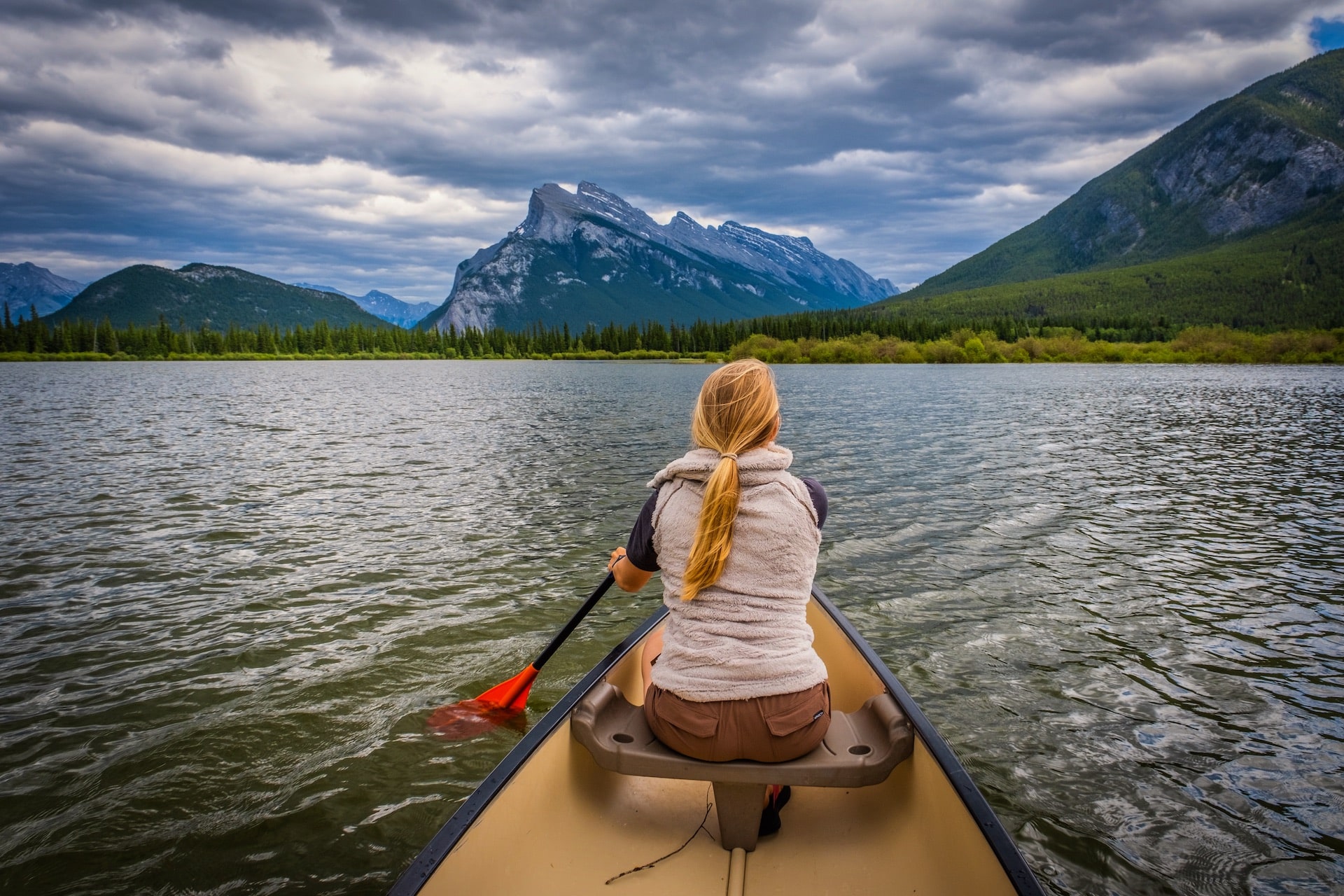
Anyone visiting Banff National Park needs a Parks Canada Pass. Depending on how many days you plan on visiting, it may be worth getting a Discovery Pass. If you plan to bike into Banff, you still need a Parks Canada Day Pass.
Parks Canada Day Pass Rates
| Pass Type | Rate |
|---|---|
| Adult | $11.00 |
| Senior | $9.50 |
| Youth (up to 17) | Free |
| Family/Group (7 Persons) | $22.00 |
Parks Canada Discovery Pass Fees (Yearly Pass)
| Pass Type (Yearly Pass) | Rate |
|---|---|
| Adult | $75.25 |
| Senior | $64.50 |
| Youth (up to 17) | Free |
| Family/Group (up to 7 Persons) | $151.25 |
Should You Stay in Banff or Canmore?
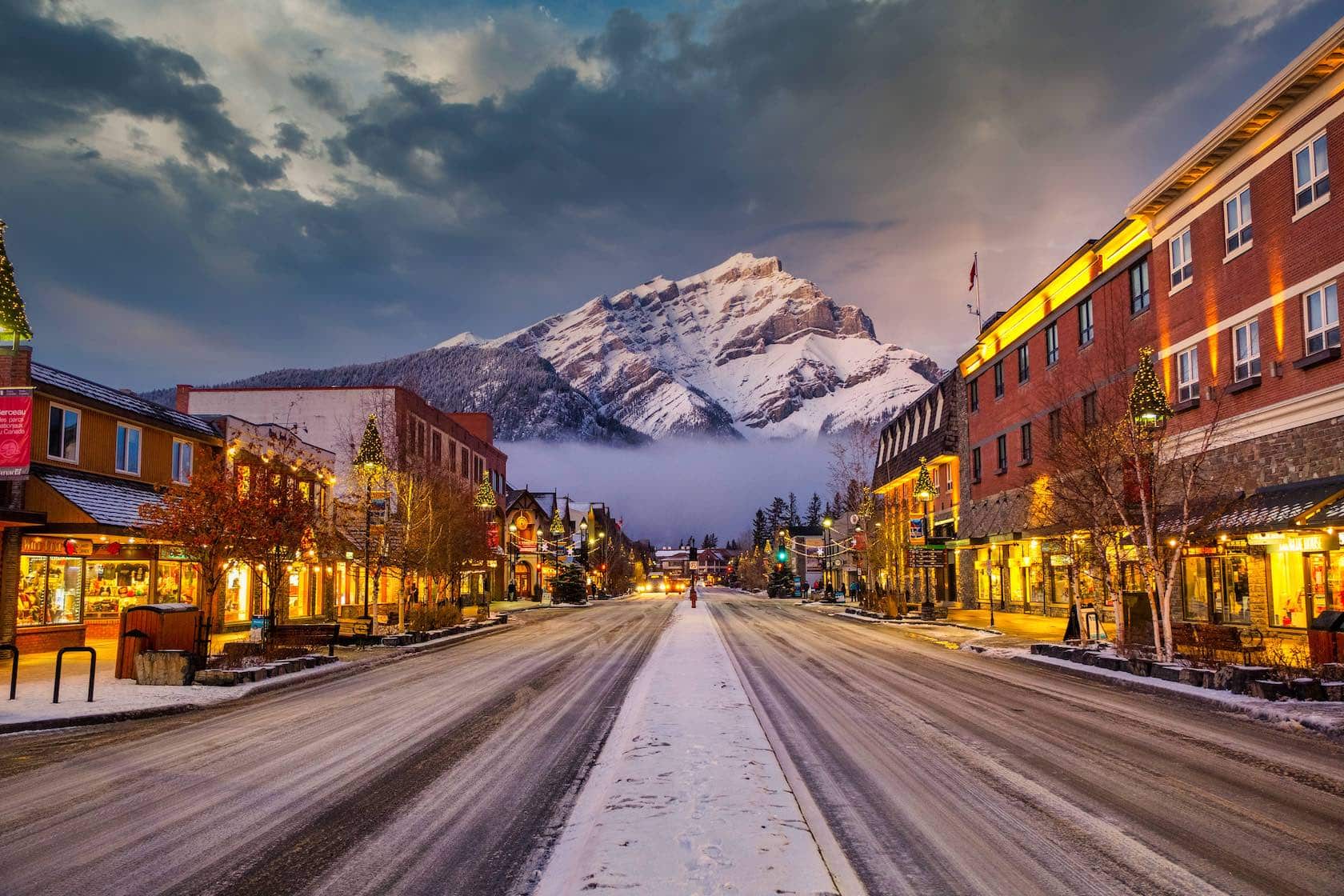
We get this question all the time. Is Banff or Canmore the better place to stay on your vacation? It is all up to you and what you want from your holiday. We break down the pros and cons of each town here.
Plan Your Trip to the Canadian Rockies
- We now have an interactive map! With over 350 stops and pre built itineraries around the Canadian Rockies, our personal map and guide is your one stop shop to an epic trip here.
- Recommended Experiences: There are many things to do in the Rockies, but our top recommendation is the Banff Gondola – a must do experience! Want to get up close and personal with a glacier? We cannot recommend this Icewalks tour enough! See more of our recommendations.
- Planning your visit to Moraine Lake and don’t want to deal with the Parks shuttles? We recommend using Moraine Lake Bus Company, Fairview Limo (leaves from Lake Louise Village) or booking with ViaVia (these leave from Banff/Canmore).
- Hotels in the Rockies: There are many places to stay, from luxury hotels to wilderness cabins. See all our favorites here.
- Get Around: We suggest renting a car to get around. You can search for rental cars on Discover Car. For a campervan trip, you can check prices and compare on Outdoorsy. Don’t forget the Guide Along Audio App for driving the Icefields Parkway (Use our link for 25% off!)
- We can help you plan your 2025 trip to Western Canada! If you’re feeling overwhelmed by planning we can assist! We’ll hop on a 1 on 1 phone call, and PERSONALLY go over your itinerary, and will save you previous time and money with our personal recommendations. Calls are followed up with detailed trip notes afterward that I write myself. See our services here.

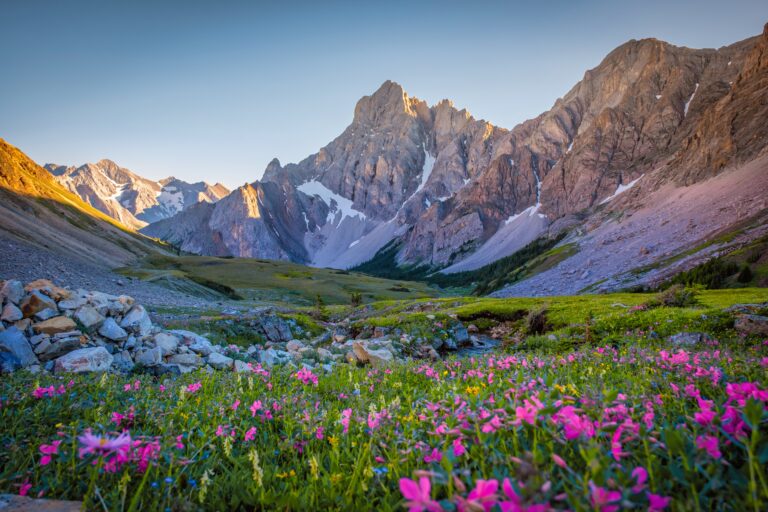
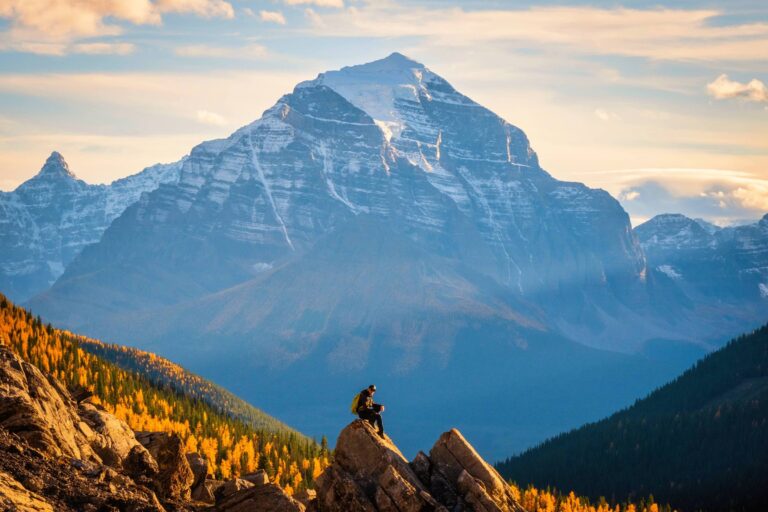
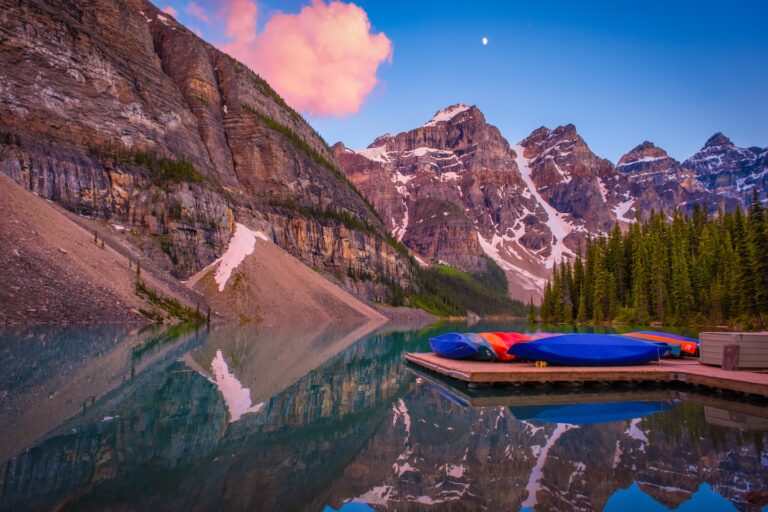
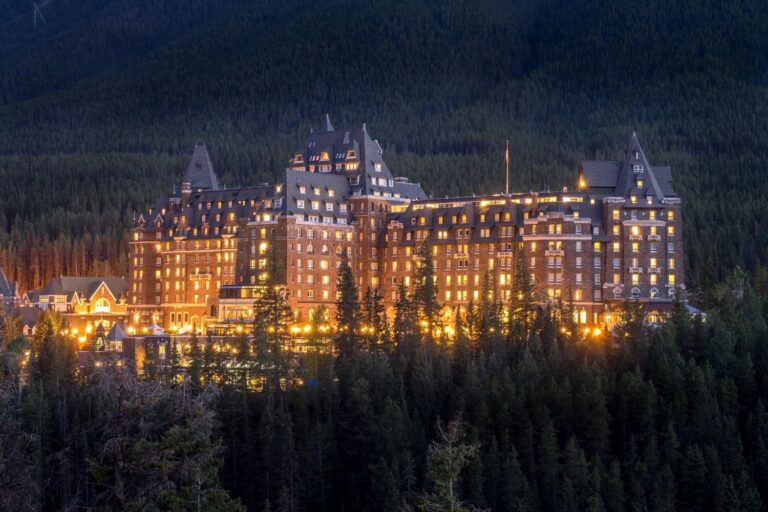
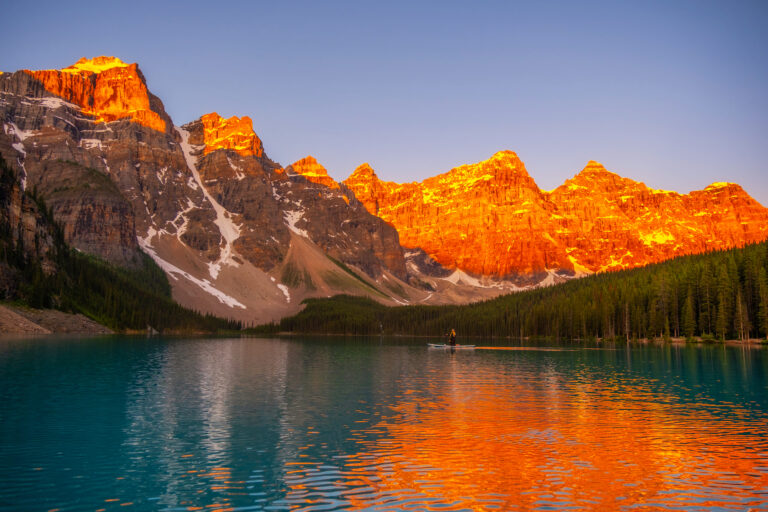
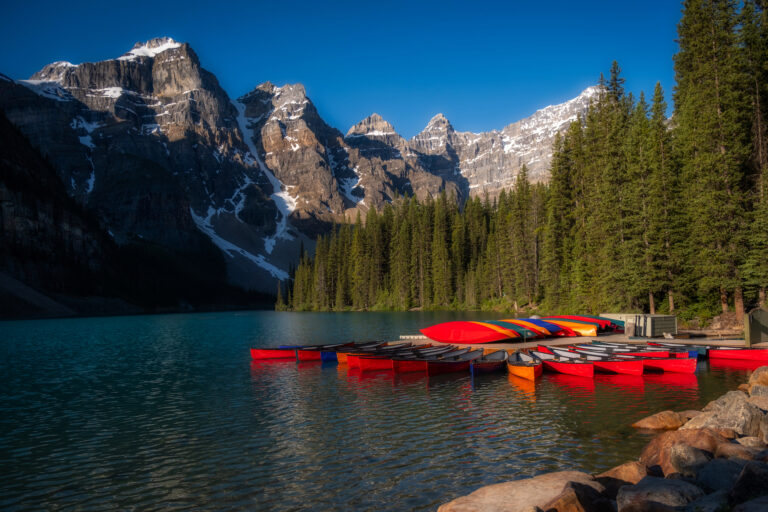
I have another recommendation for cycling between Canmore and Banff: the Rundle Riverside Trail. It’s the shortest, but most rugged cycling option, I prefer a full suspension mountain bike for this one, which connects the Canmore Nordic Centre to Banff Springs Golf Course.
Also, while technically true that a parks pass is required to visit Banff National Park or the Kananaskis Parks, they never ever check bus passengers, cyclists, hikers, skiers or paddlers. The passes are only ever checked on motor vehicles.
As an intermediate mountain biker, I won’t recommend the Rundle Riverside Trail to most visitors unless they are experienced mountain bikers. We do it once a year, as my husband is an avid mountain biker with a full suspension. While you can bike it it’s not super enjoyable unless you are pretty into mountain biking, which many visitors are not, and it could lead to unsuspecting tourists getting in over their head.
Additionally – Why would I promote not buying a pass simply because it’s unlikely Parks Canada employees will check a person? Everyone recreating in the Park should support the park they are in. It’s a small price to pay to enjoy the nature here, and I hope that you too support the park, Jeremy.
HI,
Im a bit lost. Im staying in Canmore but doing both Banff, Moraine, Lake Louise and Cnamore Hikes. Im using public buses, do I still need to buy parks canada passes? or the super day pass 25cad is fine? or its just for public buses?
Yes, all visitors to Banff National Park need a Parks Pass. You do not need one for Canmore. If you plan on hiking in Kananaskis you need a Kananaskis Conservation Pass.